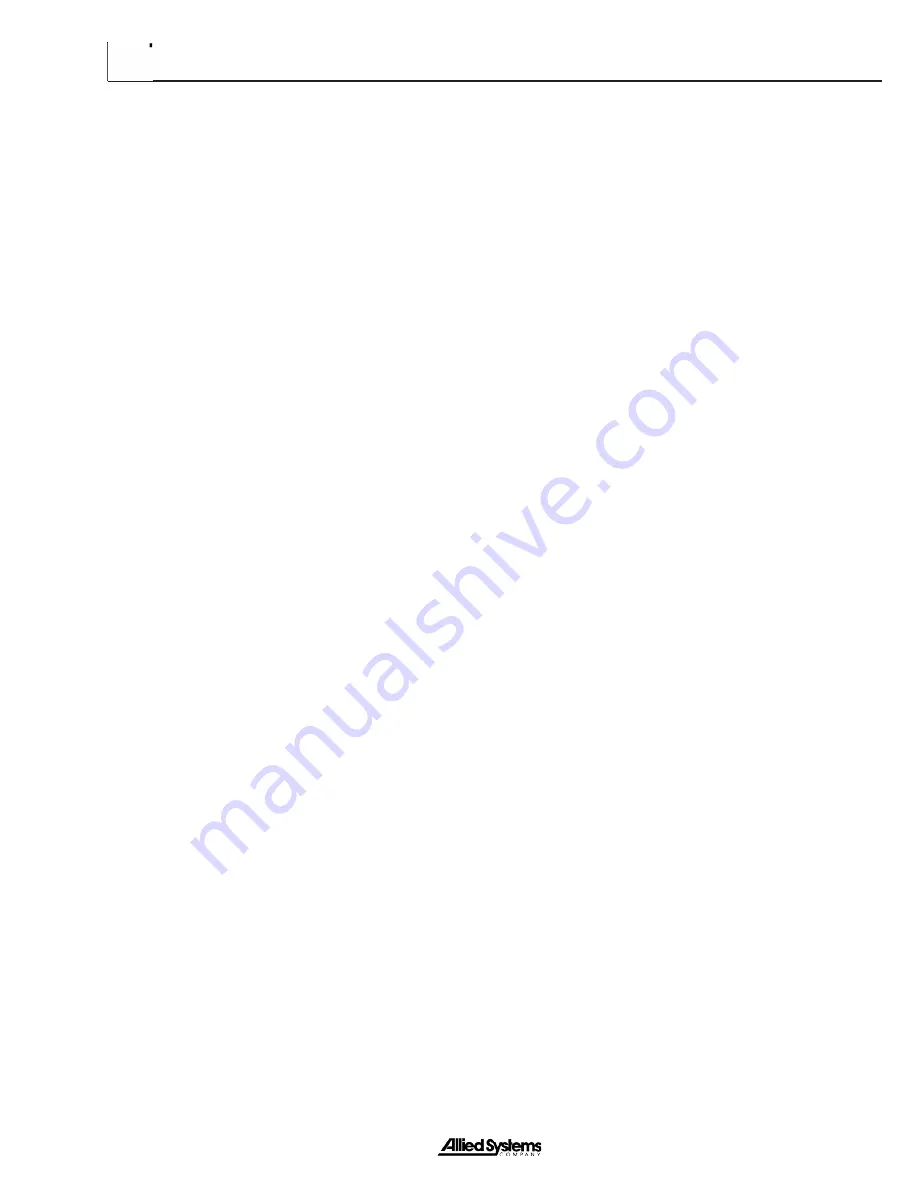
Section 3
3 - 3
(6895 kPa) and two 5000 psi (34,474 kPa) test gauges.
Pilot Supply Pressure Check
With the engine shut off, connect a 1000 psi gauge to the
tractor pilot test port (see tractor Service Manual). Start
the engine and follow procedure in Figure 3-5. Adequate
standby pilot supply is required for both tractor and winch
functions.
If the pressure is not as specified, check for:
1. Improper pilot supply valve setting or malfunction
(See tractor Service Manual)
2.
Pump pressure setting incorrect (See tractor Service
Manual)
3.
Leaking pressure hoses or fittings
Directional Valve Pressure Check
With the engine shut off, connect a 5000 psi pressure
gauge to Motor Port B. Start the engine and place control
lever in
LINE-OUT
to build pressure against the directional
valve. Check pressure as indicated in Figure 3-5. Pressure
on the B side of the motor is a ratio of the relief setting of
the directional valve. If pressure is not to specification, do
not adjust valve until remaining pressure diagnostics are
performed and other problems are identified.
directional Valve Adjustment:
1. Start engine and place control lever in
LINE-OUT
position.
2.
Measure pressure at Motor Port B.
3. Loosen directional Valve locknut. Turn directional
valve adjusting capscrew IN to decrease pressure
and OUT to increase pressure. Adjust pressures as
shown in Figure 3-5.
Motor Supply Pressure Check
With the engine shut off, connect a 5000 psi pressure
gauge to Motor Port A and one 5000 psi gauge to Motor
Port B. Disconnect and plug the brake release hose from
the brake. This will lock the winch brake to build pressure
in the motor. Check pressure as indicated Figure 3-5.
If pressure is too high, adjust the relief valve. If it is too
low, proceed with pressure diagnostics to identify other
possible problems. A damaged motor or pump can cause
low pressure at the motor.
Relief Valve Adjustment:
1.
Leave the brake pressure supply disconnected.
2.
Start the engine and operate the winch in
LINE-IN
or
LINE-OUT
.
3. Measure the pressure at Motor Port A for
LINE-IN
or Port B for
LINE-OUT
.
4.
Loosen relief valve locknut. Turn adjusting capscrew
OUT to decrease pressure and IN to increase
pressure. Adjust pressures as shown in Figure 3-5.
When relief A is set at 4100 psi, adjust set screw in
additional 1/5 turn and lock in place.
5. Reconnect brake pressure supply hose.
Brake Pressure Check
With the engine shut off, connect a 1000 psi pressure
gauge to the BR pressure test port on the logic control
manifold. Start the engine and operate the winch in
LINE-
IN
and
LINE-OUT
. Check pressure as indicated in Figure
3-5. The brake requires 300 psi to release. Low pressure
will result in premature wear of the friction discs and added
heat generation.
If the brake pressure is not as specified in Figure 3-5,
check for:
1.
Improper pilot supply pressure.
2. Malfunctioning control lever; low RI and/or RO
pressure.
3.
Leaking pressure hoses or fittings.
4.
Restriction in pressure hose or manifold port.
Brake Valve Pressure Check
With the engine shut off, connect a 1000 psi pressure
gauge to the BR pressure test port and one 1000 psi
pressure gauge to the XI pressure test port on the logic
control manifold. Start the engine and slowly meter the
control lever into the
LINE-IN
position while monitoring
both gauges. BR pressure will jump to full pilot supply
pressure when XI reaches the pilot setting of the brake
valve. Check pressure as indicated in Figure 3-5. The
brake valve sets the overlap between the hydraulic
motor drive and brake release. A low setting on the brake
release valve will release the brake before the motor
begins driving. A high setting on the brake release valve
will momentarily drive the motor against the brake before
the brake releases.
Summary of Contents for H6H
Page 3: ......
Page 9: ...vi Notes...
Page 49: ...General 1 40 Notes...
Page 65: ...General 1 56 Notes Notes...
Page 71: ...Troubleshooting 2 6 Notes...
Page 78: ...Section 3 3 7 Notes...
Page 79: ...Service 3 8 Notes...
Page 84: ...Section 4 4 5 Intentionally Blank...
Page 92: ...Section 4 4 13 7 Remove the counterbalance relief manifold...
Page 96: ...Section 4 4 17 Intentionally Blank...
Page 98: ...Section 4 4 19 7 Separate the clutch hub and the pressure plate CLUTCH HUB PRESSURE PLATE...
Page 102: ...Section 4 4 23 Intentionally Blank...
Page 112: ...Section 4 4 33 Intentionally Blank...
Page 126: ...Section 4 4 47 Intentionally Blank...
Page 132: ...Section 4 4 53 Notes...











































